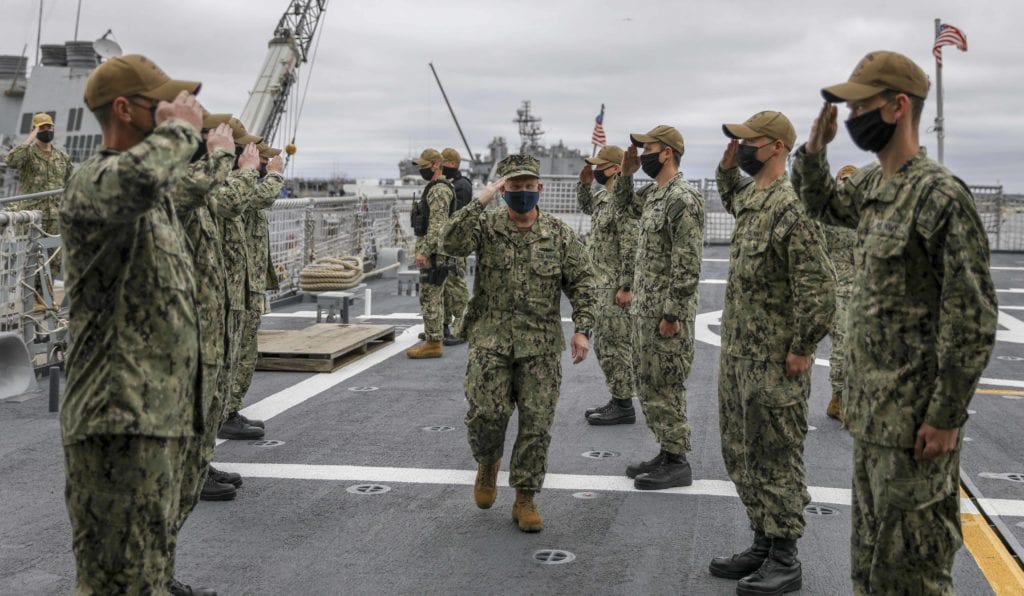
ARLINGTON, Va. — The Navy’s top officer emphasized the need to focus on the Navy’s reasons for being to avoid tangents that ultimately detract from its role in the defense of the nation.
Chief of Naval Operations Adm. Michael Gilday, speaking in a webinar of the Center for a New American Security, a Washington think tank, said the Navy missions of sea control and power projection are so obvious as to be trite to emphasize, but needed constant attention to perform.
“There have been cases in the past of where you lose sight of those ends — what your main thing is — you can get off track and put precious resources against big programs that don’t advance the Navy or any service with respect of those ends,” Gilday said.
“The things that we’re going to spend money on are going to make us more lethal and more effective with respect to sea control and power projection, and that goes hand-in-glove with the Distributed Maritime Operations concept and how that fits into the broader Joint Warfighting Concept that the chairman of the Joint Chiefs is working with his staff that I expect the secretary of defense to ultimately endorse.”
Gilday emphasized that recent studies of the force structure said the nation needed a larger, more capable Navy.
“Over the past two decades, we have tended not to put strategic investments behind the fleet than we probably should have, so we put ourselves in a situation where we’re falling behind,” he said, noting that while the size of the fleet matters, it was “easy to get seduced by numbers. What we really need to be focused on is capabilities, particularly what capabilities the Navy can close for the joint force.”
The CNO said the Navy’s shipbuilding plan, which was based on the Naval Force Structure Study, “was really focused on operationally relevant metrics — things like lethality, survivability, operational reach — things that are going to allow the Navy to synergistically be much more effective within the joint force.”
The admiral also said factors that can’t be ignored include “total ownership cost, maintenance cost, technical risk of new programs versus operational risk of in the transition of sun-downing legacy programs, industrial base capacity and what the art of the possible is or is not with respect to certain platforms.
“In the end, what we become more focused on with respect to the analysis that we’ve done is the composition of the fleet with respect to capabilities that then translates into platforms,” Gilday said.
The CNO said the force structure studies show more emphasis on undersea capabilities and smaller ships that are more distributed than on larger ships, and more emphasis on offensive hypersonics, directed energy weapons and logistics ships.
“That analysis is sound,” he said. “My take on discussions inside the Pentagon with OSD [the Office of the Secretary of Defense] as we close on the [fiscal 2022] budget, we are grounding decisions on that analysis that was done last year under [Defense] Secretary [Mark] Esper. “That analysis is not static. We have ongoing experiments, fleet battle problems, exercises, war games and analysis.”
Gilday said in a few weeks, the Navy will conduct an exercise off California that will “further inform our understanding of where we need to go with unmanned capabilities, and then the numbers.”
- SECNAV Advocates Increased Legal Immigration to Increase Shipbuilder Workforce - April 23, 2024
- Insitu Going Strong at 30, Focusing on Maritime Operations - April 8, 2024
- Navy Awards Boeing Additional Funds for MQ-25 Drones for Testing - April 3, 2024






